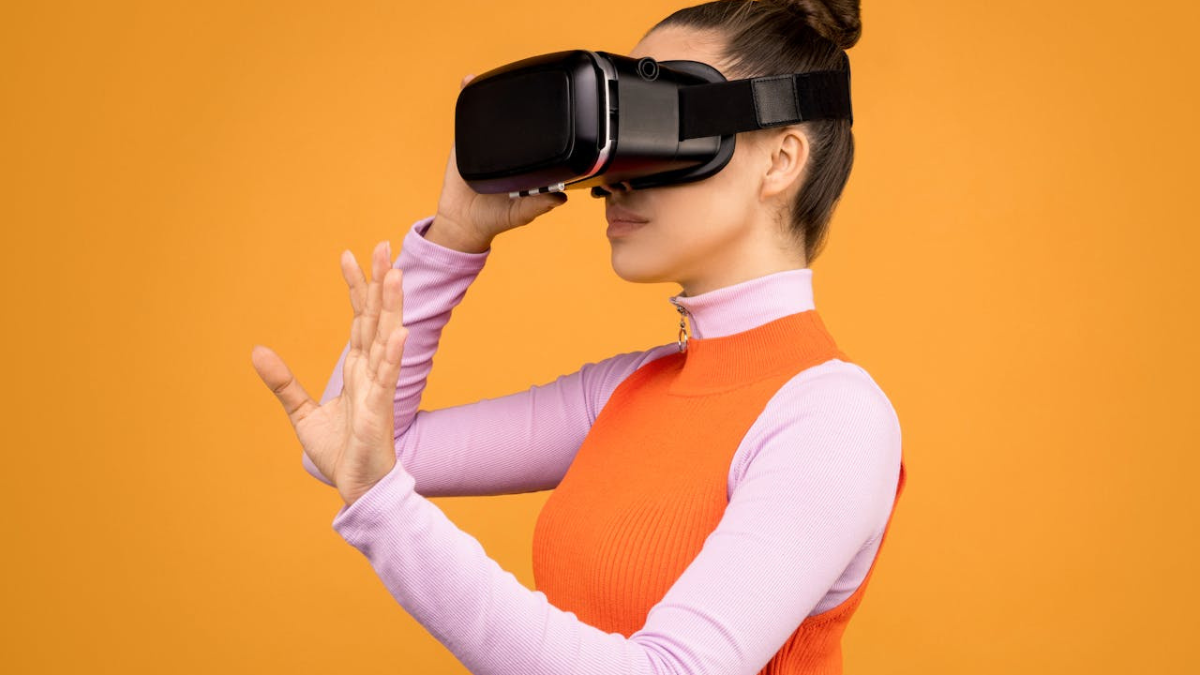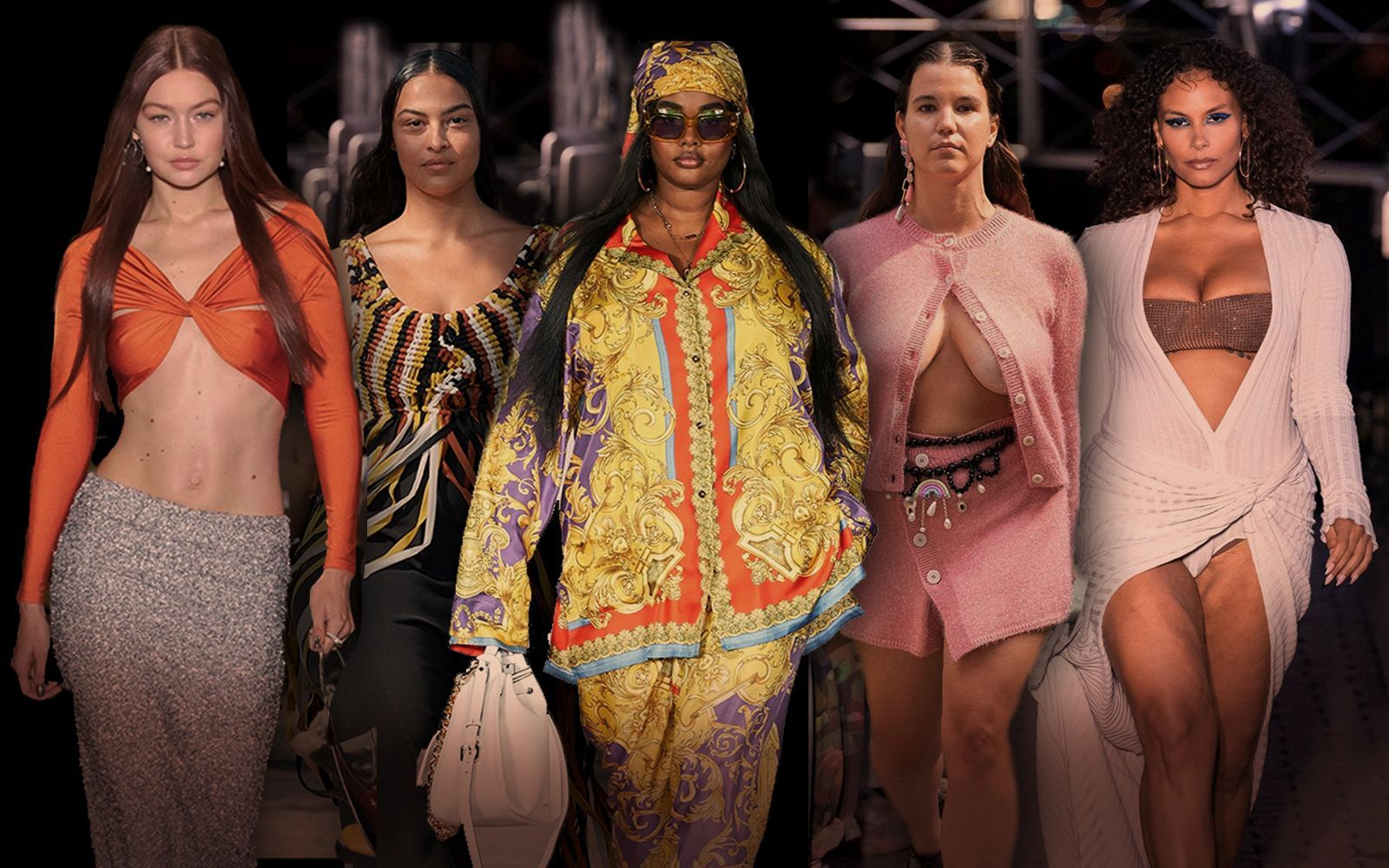

Table of Contents
Introduction
Fashion – Fashion has always been an essential aspect of human culture, and women’s fashion, in particular, has played a significant role in shaping societal norms, individual identity, and global industries. Over the years, the evolution of women’s fashion has been influenced by cultural movements, technological advancements, and changing perceptions of femininity and empowerment. Today, fashion is not just about aesthetics; it is a statement, a form of self-expression, and a reflection of societal change.
This article delves into the latest trends in women’s fashion, explores the impact of innovation on the industry, and examines how fashion has become more inclusive, sustainable, and technologically advanced. From the rise of digital fashion to the growing emphasis on sustainability, we will uncover how the modern woman is redefining style in the 21st century.
1. The Digital Revolution in Women’s Fashion

The world of women’s fashion is undergoing a radical transformation, thanks to the digital revolution. Technology is no longer just an accessory to the fashion industry—it has become an essential element in shaping trends, consumer behavior, and even the way garments are designed and produced.
With the rise of artificial intelligence (AI), augmented reality (AR), e-commerce, and sustainable innovations, the way women shop and interact with fashion has drastically changed. This article explores how the digital revolution is redefining women’s fashion, from online shopping experiences to AI-generated designs, and the impact these innovations have on society.
1. The Rise of Digital Fashion and Virtual Wardrobes
The concept of fashion is no longer limited to physical garments. Digital fashion is reshaping the way women express themselves in online spaces.
1.1 The Emergence of Virtual Clothing
Digital clothing, powered by AI and AR, allows consumers to purchase outfits that exist only in the virtual world. Brands like DressX and The Fabricant offer high-end digital clothing that can be used in social media, gaming, and the metaverse. Women can now buy digital outfits, experiment with styles, and reduce the environmental impact of fast fashion.
1.2 NFTs and Blockchain in Fashion
The blockchain revolution has entered the fashion industry, allowing brands to create exclusive NFT-based fashion pieces. Designers like Dolce & Gabbana and Gucci have launched limited edition NFT collections, blending high fashion with digital ownership. These virtual assets not only redefine luxury but also ensure authenticity and exclusivity in the digital fashion space.
1.3 Virtual Fashion Shows and AI Models
Due to the pandemic, traditional runway shows have taken a digital turn. Virtual fashion shows using AI-generated models are becoming more common, reducing costs while increasing global accessibility. Brands like Balenciaga and Prada have successfully hosted digital-only fashion shows, embracing futuristic trends that cater to tech-savvy consumers.
2. AI and Personalization: A New Era of Shopping
AI is transforming the shopping experience by offering hyper-personalized recommendations and enhancing customer interactions.
2.1 AI-Powered Styling and Virtual Assistants
AI-driven fashion assistants like Google’s Shopping AI and Amazon’s Echo Look analyze personal preferences and suggest styles tailored to individual tastes. These smart algorithms make it easier for women to find outfits that align with their unique style without stepping into a physical store.
2.2 Virtual Try-On Technology
Augmented reality (AR) allows consumers to try on clothes virtually before making a purchase. Brands like Zara and Sephora use AR mirrors and apps that let users see how an outfit or accessory looks in real time. This innovation reduces return rates and improves customer satisfaction.
2.3 Predictive Fashion Trends with AI
AI algorithms analyze global fashion trends, predicting what will be in style months in advance. By scanning millions of online searches, social media posts, and fashion blogs, AI helps designers create collections that align with current and future demands.
3. The Impact of E-Commerce and Social Media on Fashion Trends
The digital world has democratized fashion, making it more accessible and diverse than ever before.
3.1 The Power of Social Media Influencers
Social media platforms like Instagram, TikTok, and Pinterest have become the new runways. Influencers and content creators dictate trends, making fashion more relatable and interactive. Brands now collaborate with micro-influencers, recognizing that authentic engagement drives more conversions than traditional advertising.
3.2 Live Shopping and Instant Purchases
Live shopping events on platforms like TikTok, Instagram Live, and Facebook Shops have made online shopping more dynamic. Women can watch influencers try on clothes, get styling tips, and purchase items instantly during live sessions.
3.3 The Role of AI in E-Commerce Personalization
AI-driven recommendation engines on platforms like Amazon and ASOS analyze browsing habits, purchase history, and social media activity to offer highly personalized shopping experiences. This targeted approach increases customer satisfaction and boosts sales.
4. Sustainable Fashion in the Digital Age
The fusion of technology and sustainability is paving the way for a more eco-conscious fashion industry.
4.1 Smart Fabrics and Sustainable Materials
Innovations in textile technology have led to the development of biodegradable fabrics, recycled polyester, and lab-grown leather. Brands like Stella McCartney and Patagonia are leading the charge in creating sustainable fashion options without compromising style.
4.2 Digital Sampling and 3D Printing
Instead of producing physical prototypes, many designers now use 3D design software to create digital samples. This reduces waste and speeds up production. 3D printing technology also enables brands to create custom fashion pieces with minimal material waste.
4.3 Renting and Second-Hand Digital Platforms
The rise of second-hand fashion platforms like Depop, The RealReal, and Vestiaire Collective has made sustainable shopping more accessible. Women are embracing the circular fashion economy, where buying, reselling, and renting clothes is becoming the norm.
5. The Future of Digital Fashion
With continued technological advancements, the future of women’s fashion looks more innovative than ever.
5.1 AI-Generated Designs and Automated Production
AI is now capable of designing entire fashion collections, from selecting fabrics to creating intricate patterns. Companies like Zara and H&M use AI to optimize production, ensuring faster and more efficient supply chains.
5.2 The Expansion of Virtual Reality (VR) Shopping
As VR technology improves, virtual fashion stores will become more common. Consumers will soon be able to step into a fully immersive digital boutique, browse clothing racks, and interact with virtual assistants in real time.
5.3 The Role of the Metaverse in Fashion
The metaverse is expected to be a game-changer for fashion. Brands are already exploring opportunities to create virtual stores, NFT-based clothing, and avatar customization in digital worlds like Decentraland and The Sandbox.
The digital revolution in women’s fashion is more than just a passing trend—it is a fundamental shift in how clothing is designed, produced, marketed, and consumed. As AI, AR, and blockchain technology continue to evolve, the fashion industry will become more sustainable, inclusive, and personalized.
Women today have more control over their fashion choices than ever before, whether through virtual try-ons, AI-driven styling, or digital clothing collections. The future of fashion is here, and it is being shaped by innovation, technology, and the ever-changing desires of modern consumers.
Fashion is no longer just about what you wear—it is about how you experience and engage with it in the digital world. The question is, are you ready for the future of fashion?
2. The Shift Towards Sustainable Fashion
Fashion has always been a reflection of culture, identity, and self-expression. However, in recent years, the industry has come under scrutiny for its environmental and ethical impact. Fast fashion has dominated the market, providing consumers with cheap and trendy clothing, but at a significant cost to the planet and garment workers.
As awareness grows, a shift towards sustainable fashion is taking place, driven by technological innovations, consumer demand, and ethical responsibility. This article explores the evolution of sustainable fashion, the key players leading the movement, and what the future holds for an industry in transition.
1. Understanding Sustainable Fashion
1.1 What is Sustainable Fashion?
Sustainable fashion refers to the design, production, and consumption of clothing that minimizes environmental impact and promotes ethical labor practices. It involves using eco-friendly materials, reducing waste, and ensuring fair wages for workers.
1.2 The Problem with Fast Fashion
Fast fashion has made clothing more affordable, but it has also contributed to significant environmental issues:
Water Pollution: The textile industry is responsible for 20% of global wastewater.
Carbon Footprint: Fashion accounts for approximately 10% of global carbon emissions.
Waste Generation: Over 92 million tons of textile waste is produced annually.
With these concerns in mind, both brands and consumers are seeking better alternatives.
2. Innovations Driving Sustainable Fashion
2.1 Eco-Friendly Materials
Traditional fabrics like polyester and conventional cotton have a high environmental cost. Sustainable alternatives include:
Organic Cotton: Grown without harmful pesticides and chemicals.
Hemp: Requires less water and grows quickly.
Tencel (Lyocell): Made from sustainably sourced wood pulp.
Piñatex: A leather alternative made from pineapple leaves.
2.2 Circular Fashion Economy
The linear model of “take, make, dispose” is being replaced by a circular fashion approach, which focuses on:
Recycling and Upcycling: Brands like Patagonia and Levi’s encourage customers to repair or recycle old clothing.
Clothing Rental Services: Companies like Rent the Runway offer consumers the chance to rent outfits instead of purchasing.
Second-Hand and Resale Platforms: Apps like Depop and The RealReal make thrifting more accessible and trendy.
2.3 3D Printing and Digital Sampling
Fashion brands are utilizing 3D printing to create customized clothing, reducing material waste. Digital sampling also helps designers visualize collections without producing excessive prototypes.
2.4 AI and Data-Driven Sustainability
Artificial intelligence is being used to optimize supply chains, predict demand, and reduce overproduction. Companies like H&M and Zara are investing in AI to create a more efficient and sustainable retail experience.
3. The Role of Brands in Sustainable Fashion
3.1 Sustainable Fashion Pioneers
Several brands have committed to sustainability:
Stella McCartney: A leader in cruelty-free and eco-friendly fashion.
Eileen Fisher: Focused on ethical production and recycling initiatives.
Reformation: Uses deadstock fabric and eco-friendly materials.
Patagonia: Encourages customers to repair and recycle their gear.
3.2 Fast Fashion Brands Going Green
Even fast fashion retailers are making changes:
H&M Conscious Collection: Uses sustainable materials like organic cotton and recycled fabrics.
Zara’s Join Life Initiative: Aims to use 100% sustainable materials by 2030.
Nike’s Move to Zero: Focused on reducing carbon emissions and waste.
While these initiatives are promising, critics argue that true sustainability requires a deeper commitment beyond marketing campaigns.
4. Consumer Influence: The Power of Ethical Shopping
4.1 The Rise of Conscious Consumers
Shoppers are demanding more transparency from brands. Studies show that 66% of global consumers are willing to pay more for sustainable products. Millennials and Gen Z are leading the charge, using their purchasing power to drive change.
4.2 Sustainable Shopping Tips
Consumers can support ethical fashion by:
Choosing Quality Over Quantity: Investing in well-made, timeless pieces.
Shopping Second-Hand: Supporting thrift stores and resale platforms.
Researching Brands: Using resources like Good On You to check a brand’s sustainability rating.
Washing Clothes Sustainably: Using cold water and air-drying to reduce energy consumption.
5. Government Regulations and Industry Standards
5.1 Laws and Policies Promoting Sustainable Fashion
Governments are stepping in to regulate the industry:
The EU Green Deal: Aims to make sustainable fashion the norm in Europe.
The Fashion Act (New York): Requires major brands to disclose environmental and labor practices.
Extended Producer Responsibility (EPR) Policies: Holding brands accountable for textile waste.
5.2 Certifications and Ethical Standards
Consumers can look for certifications such as:
Global Organic Textile Standard (GOTS): Ensures organic and ethical textile production.
Fair Trade Certified: Guarantees fair wages and safe working conditions.
OEKO-TEX Standard 100: Verifies textiles are free from harmful substances.
6. The Future of Sustainable Fashion
6.1 Innovations to Watch
The future of fashion is bright with emerging sustainable technologies:
Biodegradable Textiles: Fabrics that decompose naturally, like mushroom leather.
Algae-Based Dyes: Reducing the use of toxic synthetic dyes.
Smart Fabrics: Clothing embedded with sensors to optimize wear and longevity.
6.2 The Role of the Metaverse in Sustainable Fashion
With the rise of digital fashion and NFTs, the fashion industry is exploring virtual clothing that reduces the need for physical production. Brands like Gucci and Balenciaga are already selling digital outfits for avatars, redefining how consumers interact with fashion.
6.3 Collaborative Efforts for a Greener Future
To make real change, collaboration between governments, brands, and consumers is essential. Initiatives like the Fashion Pact and the UN Alliance for Sustainable Fashion are working towards a more eco-friendly industry.
The shift towards sustainable fashion is no longer just a trend—it is a necessity. As technology advances and consumer awareness grows, the fashion industry must adapt to meet the demands of a more ethical and environmentally friendly future.
By embracing circular fashion, supporting sustainable brands, and making conscious shopping choices, we can all play a role in transforming the industry. Fashion should not only make us look good—it should also do good for the planet and the people who make our clothes.
3. Inclusivity and Body Positivity in Fashion

The modern fashion industry is becoming more inclusive, recognizing the need to celebrate diversity in body shapes, skin tones, and cultural backgrounds.
3.1 Expanding Size Ranges
Brands like Savage X Fenty, Good American, and Aerie are leading the charge in offering a wider range of sizes, making stylish clothing accessible to all body types. Plus-size fashion is no longer an afterthought but a central part of major fashion campaigns.
3.2 Representation in Media and Runways
The demand for representation has led to the inclusion of diverse models, including those with disabilities, different ethnicities, and varying body types. The Victoria’s Secret rebrand and the rise of inclusive fashion weeks reflect this growing change.
3.3 Modest Fashion and Cultural Expression
Fashion is also becoming more respectful of different cultures and religious beliefs. The growth of modest fashion, which includes hijabs, abayas, and longer silhouettes, has gained international recognition. Brands like Dolce & Gabbana have even launched exclusive modest fashion lines catering to Muslim women.
4. The Future of Women’s Fashion: Innovation and Beyond
The future of women’s fashion is shaped by technology, sustainability, and evolving consumer behavior. Here are some key innovations that will define the next era of fashion.
4.1 Smart Clothing and Wearable Tech
Tech-integrated fashion is on the rise, with smart fabrics that can change color, regulate temperature, and even track health metrics. Brands like Nike and Levi’s are experimenting with wearable technology to merge fashion with functionality.
4.2 The Role of AI in Fashion Design
AI is not only transforming online shopping but also assisting in fashion design. AI-generated fashion designs, predictive trend analysis, and automated pattern-making are making fashion production more efficient.
4.3 3D Printing and Customization
3D-printed clothing is paving the way for fully customizable fashion. Instead of mass production, consumers may soon have the ability to print their own garments at home, reducing waste and promoting uniqueness in style.
Conclusion
Women’s fashion is undergoing a dynamic transformation, influenced by digital innovation, sustainability, and a commitment to inclusivity. The modern woman is not just following trends; she is actively shaping the industry through conscious consumerism and a demand for authenticity.
As technology continues to evolve, fashion will become more personalized, accessible, and environmentally friendly. Whether it’s through the rise of AI, the push for ethical production, or the embrace of diverse body types, the future of women’s fashion promises to be more innovative and empowering than ever before.
So, whether you’re embracing digital fashion, investing in sustainable pieces, or experimenting with smart clothing, one thing is clear—women’s fashion is no longer just about looking good; it’s about making a statement that matters.
